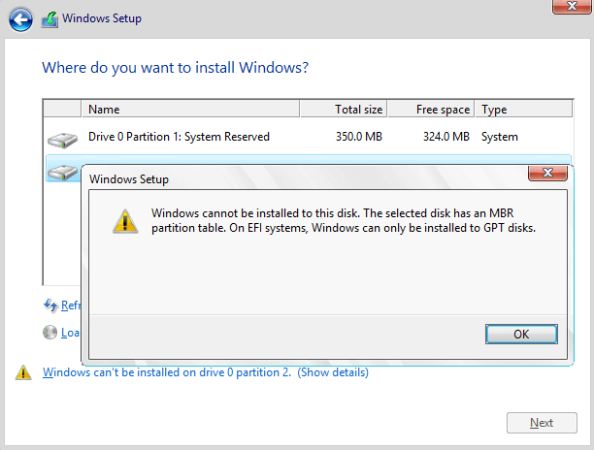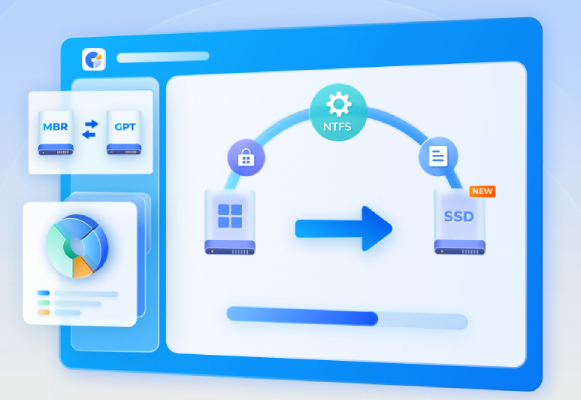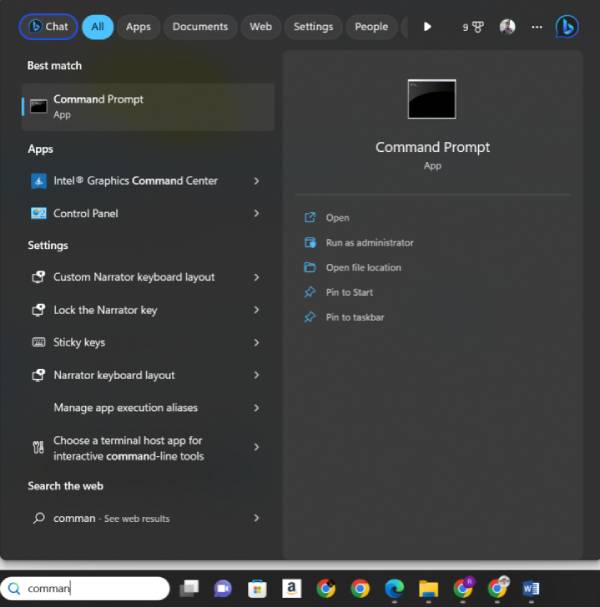Lost Partition Recovery on Windows 11/10 – Complete Disk Partition Recovery Guide
How to recover deleted partition in Windows 11/10/8/7? Your best bet is to download 4DDiG Partition Manager, which is the best partition recovery software.
When a partition suddenly disappears from your hard drive, USB, or SSD, it can feel like all your data is gone forever. Don't worry. In fact, most cases of lost partitions can be resolved by effective disk partition recovery. This guide focuses on professional lost partition recovery solutions for Windows 11 and Windows 10, covering everything from basic diagnosis to advanced recovery methods for different storage devices. Now, let's dive in!

Part 1: What Causes Partition Loss?
Before attempting to recover partition data or start any form of disk partition recovery, it is important to understand what actually causes a partition to be lost in the first place. Here are common causes of lost partition:
- Accidental Deletion: Human error is one of the most common culprits. Accidentally deleting a partition while attempting to perform other operations can lead to its loss.
- Partition Formatting: Sometimes, you might need to format the correct partition, leading to data loss. It can happen during a fresh OS installation or disk management.
- Software Errors: Certain software or utilities may occasionally cause partition loss, mainly when dealing with disk management tools.
- Virus or Malware: Malicious software can corrupt the file system, making partitions inaccessible or causing them to disappear entirely.
- Hardware Failures: Physical issues with your storage device, such as a hard drive crash, can lead to partition loss.
Part 2: How to Recover a Lost Partition: Complete Lost Partition Recovery Guide
If you are facing repeated partition loss and wondering how to recover partitions if deleted many times, using the right lost partition recovery method is crucial. Here are the methods:
Fix 1: Recover Deleted Partitions using CMD
One of method for disk partition recovery in Windows 11/10 involves using the Command Prompt (CMD). This method is helpful if you prefer a manual approach or want to explore built-in options.
- Press Win + X and choose "Command Prompt (Admin)" or "Windows Terminal (Admin)" to open CMD with administrative privileges. Then type “diskpart” and press Enter to open the Diskpart utility.
- Type list disk and press Enter to display a list of all the disks connected to your computer. Identify the disk where your deleted partition was located.
- Type "select disk X" (replace "X" with the number of the disk where the partition was) and press Enter. Type list partition and press Enter. Then identify the deleted partition and note its number. Type select partition Y (replace "Y" with the number of the deleted partition) and press Enter.
-
Lastly, type recover and press Enter. This command will attempt to recover the partition.

CMD-based recovery is a manual process and may only sometimes be successful, especially if the partition has been overwritten or severely damaged. If you're uncomfortable with the Command Prompt or the partition contains critical data, it's advisable to use a professional partition recovery tool like 4DDiG Partition Manager for a higher chance of success.
Fix 2: Recover Deleted Partition via the Best Disk Partition Software
Compared with risky and complicated CMD commands, 4DDiG Partition Manager provides a safer and much easier way to recover partition data and manage disks through a visual, step-by-step interface. It is designed as a complete disk partition recovery and system management solution in one single toolkit:
- Lost Partition Recovery – Quickly scan and restore deleted or missing partitions without manual commands, making lost partition recovery accessible even for non-technical users.
- Disk & System Cloning – Clone entire disks or system partitions to a new SSD/HDD without reinstalling Windows or losing data.
- MBR to GPT Conversion – Convert MBR to GPT safely without data loss, which is essential for Windows 11 compatibility.
- Windows 11 Upgrade Bypass – Bypass TPM and Secure Boot limitations to upgrade unsupported PCs to Windows 11 easily.
- Complete Partition Management – Resize, merge, split, create, format, or delete partitions with full control and minimal risk.
-
First, download and launch the 4DDiG Partition Manager. If you need to recover a partition from an external hard drive, please connect it to your computer. To proceed, select "Partition Recovery" from the left navigation bar. Select the disk containing the partition you would like to recover and then click "Quick scan" to proceed.
FREE DOWNLOADSecure Download

If you still cannot locate the partition you're intended for, run a deep scan.

If you still cannot find the desired partition(s), you can run a full scan.

-
Please be patient, as the entire scanning process will take some time. Once you've found the partition you want to recover, you can pause the scan by clicking the Stop button.

-
Pick the partition or partitions you want to recover. Please be aware that this operation will overwrite any existing partition(s), so make sure it's something you want to do. Next, select "Sure" and then "Start recovery" to move forward.

-
After the partition has been successfully recovered, click Finish.

Fix 3: Recover Deleted Partitions by Assigning a Drive Letter
In some cases, a deleted partition may not be entirely lost but rather unallocated, meaning it doesn't have an assigned drive letter. You can recover it by assigning a drive letter using the built-in Windows Disk Management tool. Here's how to how to recover data from deleted partition:
- Press Win + X and select "Disk Management" from the menu. Right-click on the unallocated space and select "Change Drive Letter and Paths."
-
Click "Add" in the window that appears. Assign a drive letter to the partition and click "OK."

If the partition appears in File Explorer with the newly assigned drive letter, you've successfully recovered it. However, if this method doesn't work, you might need to use a specialized recovery tool like 4DDiG Windows Data Recovery to scan for and recover the lost partition.
Fix 4: Use Windows File Recovery Solution to Recover Partition
Windows 11/10 offers its data recovery tool, Windows File Recovery. This tool is designed to help you recover accidentally deleted files and folders, but it can also be helpful in recovering data from lost partitions. Here's how to use it:
- If you don't already have it, you can download Windows File Recovery from the Microsoft Store. Press Win + X and selecting "Command Prompt (Admin)" or "Windows Terminal (Admin)."
-
In the Command Prompt, use the following command to recover lost data from a specific partition:
- winfr source-drive: destination-drive
- Replace the source drive with the drive where your lost partition was located.
- Replace the destination drive with the drive where you want to save the recovered data.
- The /n switch tells Windows File Recovery only to recover files that haven't been overwritten by other data, increasing the chances of successful recovery.

- Execute the command, and Windows File Recovery will start scanning the specified drive for recoverable files. Once the recovery is complete, check the destination drive for the recovered files. You can then access and use the restored data.
While Windows File Recovery can be a helpful built-in tool, it may be less robust and user-friendly than dedicated partition recovery software like 4DDiG Partition Manager. If your partition loss is more complex or if you are not comfortable with the command-line interface, using a specialized tool may be a more reliable solution.
Part 3: FAQs about Recover Deleted Partition
Q1: What Is the Purpose of a Recovery Partition?
A recovery partition is a dedicated space on your hard drive or SSD that contains a copy of your operating system and essential system files. Its primary purpose is to provide a means to restore your computer to its factory state in case of a system failure or corruption. It's a safety net that enables you to perform system recovery, reinstall the OS, or troubleshoot issues without needing external installation media.
Q2: Can I Restore a Partition Deleted from an External Hard Drive?
Yes, you can restore a partition deleted from an external hard drive using similar recovery methods as for internal drives. External hard drives are subject to the same data recovery principles. You can use partition recovery software like 4DDiG Windows Data Recovery to scan and retrieve lost partitions from external drives. The process may vary slightly, but the essential steps are the same.
Q3: What Happens when a Partition Is Deleted?
When a partition is deleted, the file system information that tracks the location of files and directories within that partition is removed. However, the actual data may still be present on the disk until new data overwrites it. This is why data recovery is possible. To maximize the chances of successful recovery, it's crucial to avoid writing any new data to the disk after the partition is deleted. New data can overwrite the old data, making it unrecoverable.
Conclusion
With the right strategy, it is still possible to recover partition safely and efficiently in many situations. Compared with manual commands that come with a high risk of permanent data loss, professional disk partition recovery tool offers a much higher success rate and greater safety.
For users who need a reliable and user-friendly option, 4DDiG Partition Manager provides a complete all-in-one solution for lost partition recovery, disk cloning, MBR to GPT conversion, and Windows 11 upgrades. Acting quickly, avoiding further write operations, and choosing a trusted recovery tool are the key factors in achieving the best possible recovery outcome.
Secure Download
💡 Summarize with AI:
You May Also Like
- Home >>
- Windows Recovery Solutions >>
- Lost Partition Recovery on Windows 11/10 – Complete Disk Partition Recovery Guide


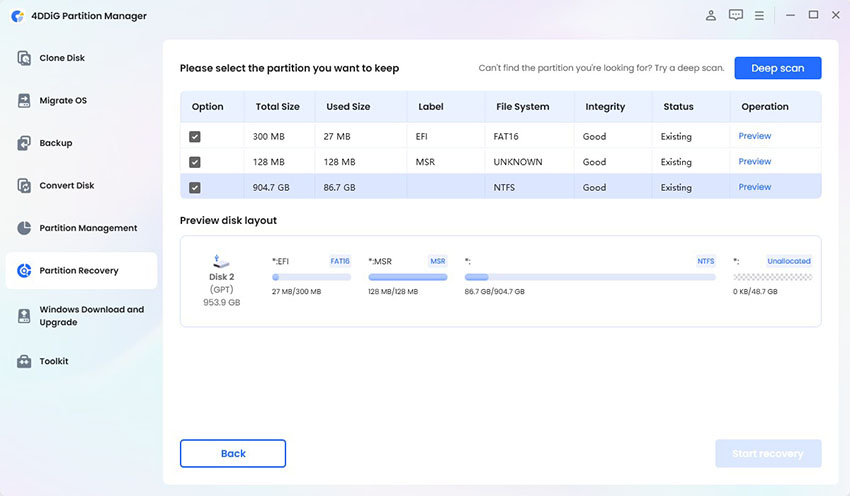

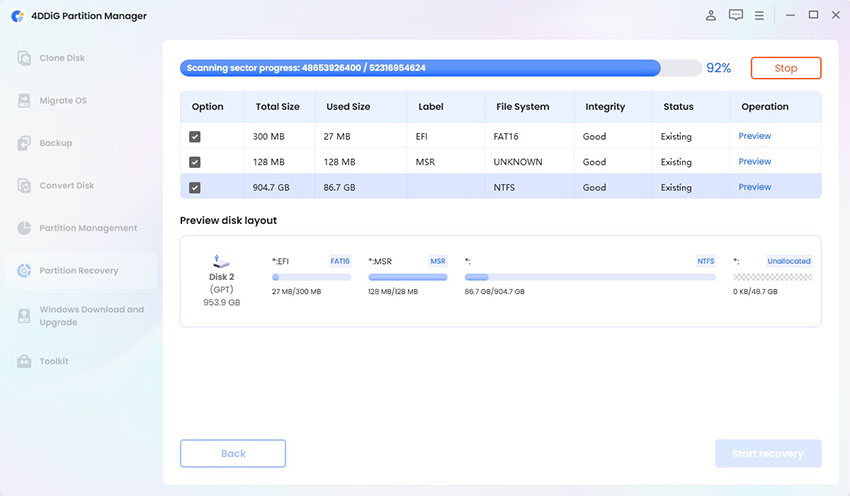
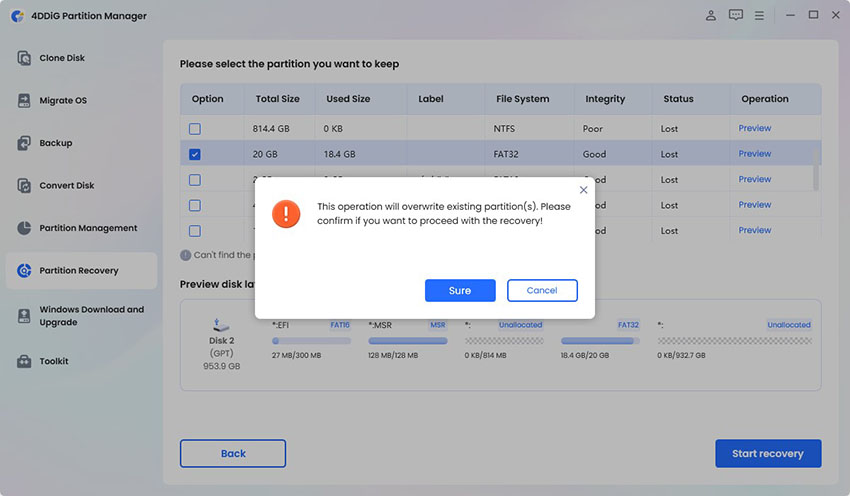
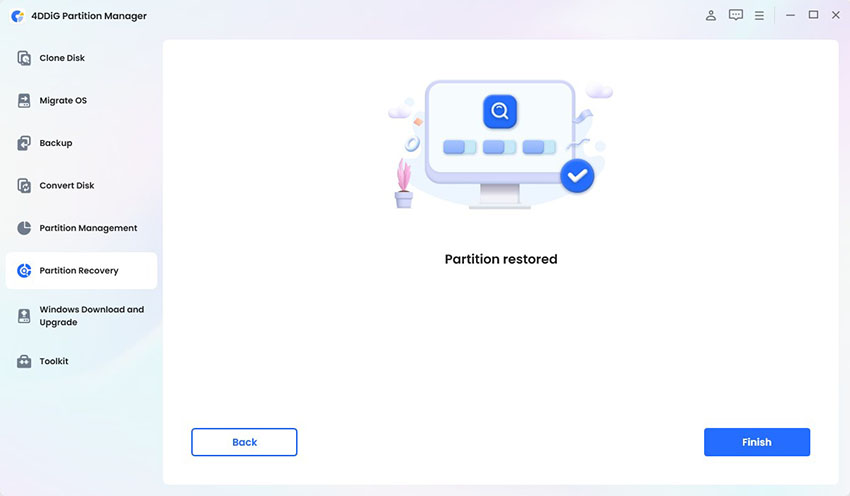
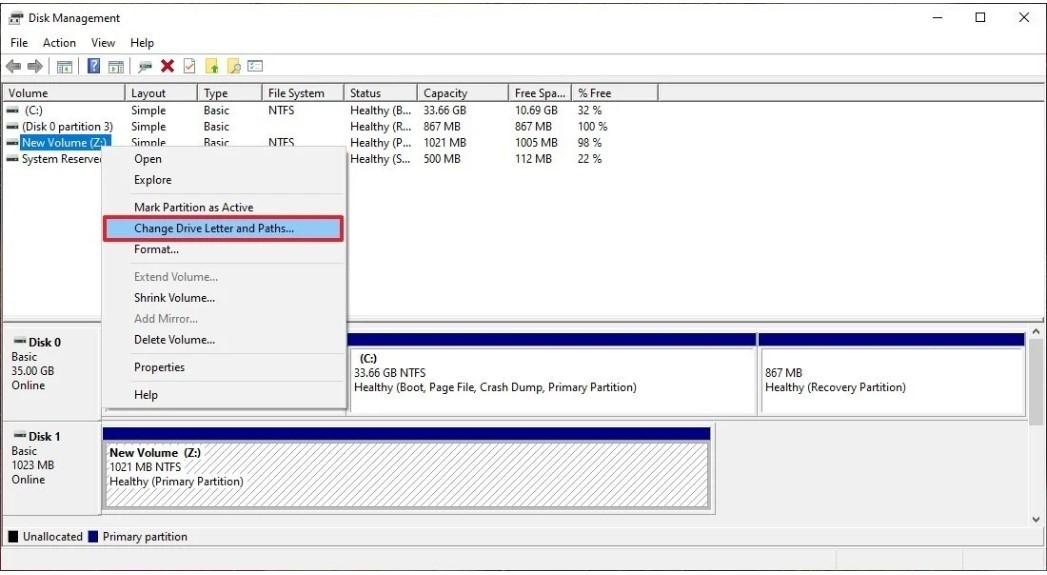

 ChatGPT
ChatGPT
 Perplexity
Perplexity
 Google AI Mode
Google AI Mode
 Grok
Grok

